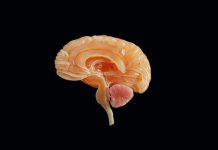
In a new study, Yale researchers have tested a new method for directly measuring synaptic loss in individuals with Alzheimer’s disease.
The method uses PET imaging technology to scan for a specific protein in the brain linked to synapses.
It has the potential to accelerate research for new Alzheimer’s treatments.
Alzheimer’s disease affects 5.7 million Americans, and that number is expected to reach 14 million by the year 2050.
To date, most of the research on the disease’s effects on the brain has been done postmortem.
To develop new treatments, researchers have recently explored methods for measuring memory loss in living patients.
The current study explores a new strategy for measuring synaptic loss—an established indicator of cognitive decline.
A decrease in synapses, the junctions between nerve cells, correlates with cognitive impairment in Alzheimer’s disease patients.
To quantify synaptic loss, the research team used a specific radioactive chemical, [11C]UCB-J, that binds with a protein, the SV2A, that is present in nearly all synapses.
The researchers recruited 21 older adults with either early Alzheimer’s disease or normal cognitive ability.
Each was injected with [11C]UCB-J and then scanned with high-resolution PET technology. The scans allowed the researchers to visualize synaptic “density” in different regions of the brain.
The researchers analyzed the scans, as well as results from MRIs and cognitive evaluations for both groups.
They found that compared to individuals with normal cognition, the participants with Alzheimer’s disease had a 41% reduction in the SV2A marker in an area of the brain associated with memory.
The findings show that the non-invasive PET test can provide a direct measure of synaptic loss in adults with even mild cognitive impairment.
The Yale team is currently recruiting more study participants to confirm their findings and potentially use the PET technique to assess Alzheimer’s disease drugs.
This PET imaging tool is also being used in clinical research for other diseases of the brain where synapse loss is a critical component of the disease, including Parkinson’s disease, epilepsy, drug abuse, depression, and schizophrenia.
The study is published in JAMA Neurology.
Copyright © 2018 Knowridge Science Report. All rights reserved.
Follow Knowridge Science Report on Facebook and Twitter.
News source: Yale University.
Figure legend: This Knowridge.com image is for illustrative purposes only.



